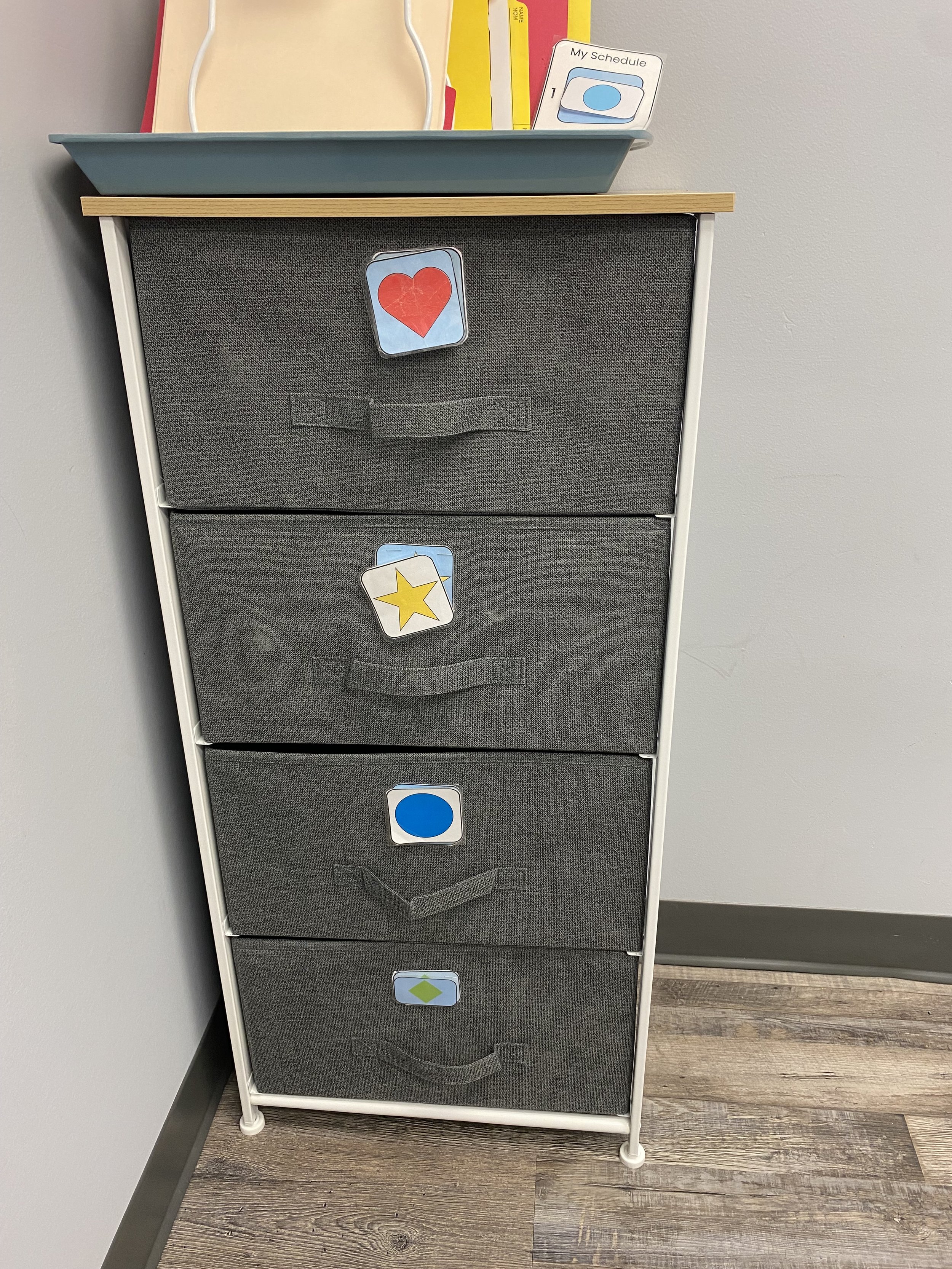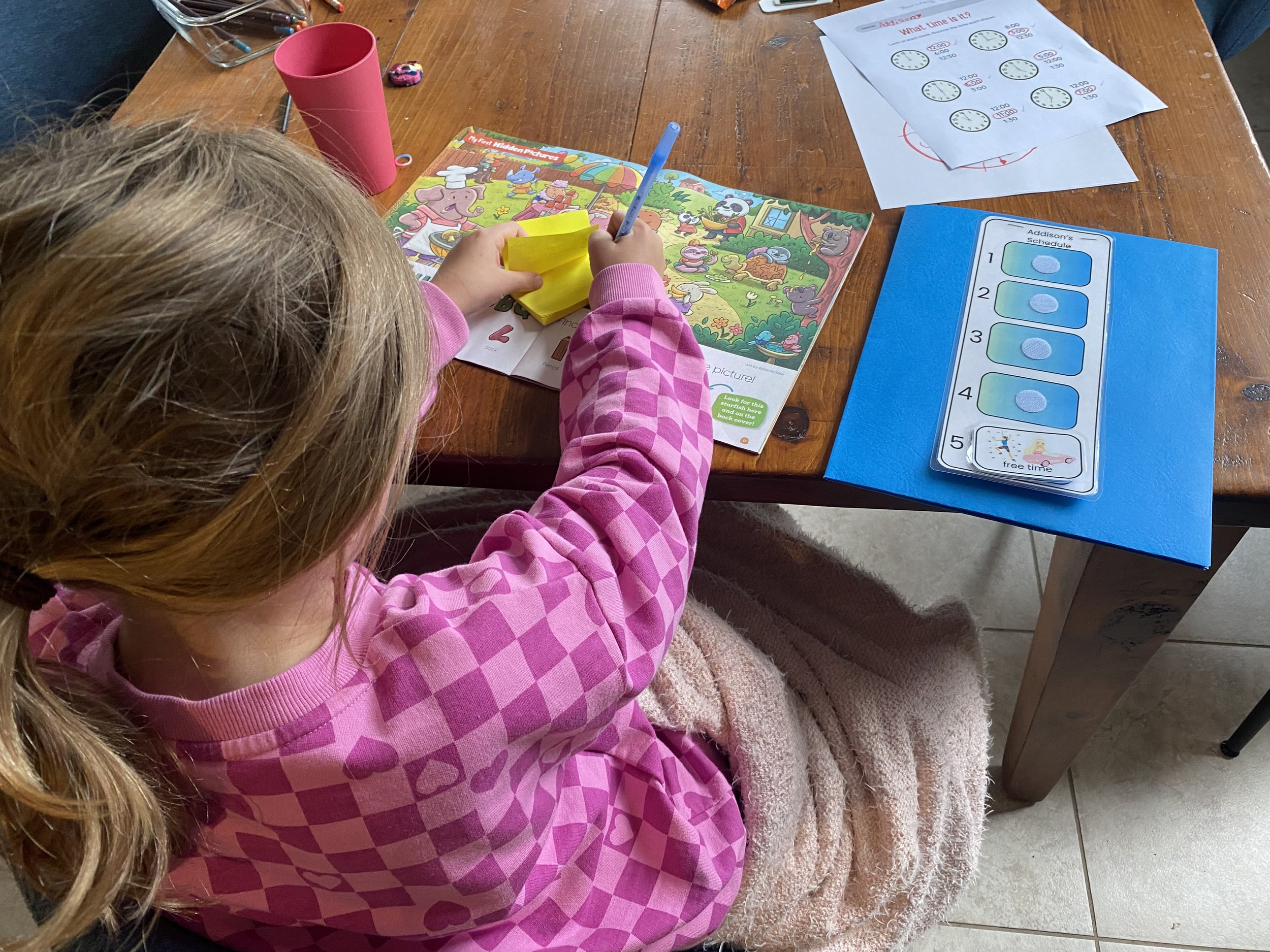Using Activity Schedules This Summer to Build Confidence and Independence
Simple schedule for little ones
As summer arrives, many parents look for ways to keep their children engaged, learning, and developing new skills. One effective strategy is incorporating independent activity schedules at home. This is one of the many “tips I’ve learned from my BCBA bestie,” Shawna Fleming, and am excited to share this tip with you!
Independent activity schedules are visual or written guides that outline a sequence of activities for children to follow on their own. These schedules help children understand what tasks they need to complete and in what order, fostering independence and confidence.
Benefits of Independent Activity Schedules
1. Promotes Self-Management: Activity schedules empower children to take charge of their tasks. By following the schedule, they learn to manage their time and activities independently, which is a crucial life skill.
2. Encourages Skill Development: Whether it's matching shapes and colors, practicing math, or enhancing reading and writing skills, activity schedules provide structured opportunities for children to practice and refine these abilities.
3. Reduces Dependence on Adults: With a clear schedule to follow, children can engage in tasks without constant supervision. This not only builds their autonomy but also gives parents a chance to focus on other responsibilities or take a well-deserved break.
4. Builds Routine and Predictability: Summer can be a time of unstructured days, which might be overwhelming for some children. Activity schedules offer a predictable routine, helping children feel more secure and organized.
How to Create an Independent Activity Schedule
1. Identify the Tasks: Choose a mix of activities that your child can do independently. This can range from simple tasks like matching shapes and colors to more complex ones like practicing math problems, reading a book, or writing a short story.
2. Use Visual Supports: Create a visual schedule using pictures or symbols for younger children or those who benefit from visual cues. For older children, a written schedule might be more appropriate.
3. Start with Close-ended Activities: Use activities that have a clear beginning and end, that way your child knows when they are done. Knowing when to move on is a critical part so that your child can learn to use the schedule independently.
School-age activity schedule
Tips for Success
Start Small: Begin with shorter schedules (e.g., even one activity to start!) and gradually increase as your child becomes more comfortable with the process.
Be Consistent: Consistency helps reinforce the routine! Be consistent in the way you run the activity schedule so that your child learns what to do.
Use Positive Reinforcement: Praise and rewards can motivate your child to stick with their schedule and complete tasks independently. Use more more positive remarks frequently in the beginning to let them know it’s great they’re working so hard! Add a favourite activity at the end of the activity schedule.
Adapting for Young Autistic Children
For young autistic children, it is essential to use highly visual supports and simple, clear instructions. For example, we use visuals such as a star, circle, square, and triangle for our younger learners instead of having visuals and text. We then have different file folder activities or bins with the corresponding shape that the child will go to in order to complete that section on their schedule.
Incorporate their interests to make the activities more engaging and motivating. Use consistent routines and repetitive activities to provide a sense of security and predictability. Additionally, consider using tangible rewards and positive reinforcement to encourage participation and completion of tasks.
Try these at home!
By incorporating independent activity schedules at home this summer, you can provide your child with a structured yet flexible way to continue learning and developing essential skills. It’s a wonderful way to balance independence with structured learning, setting your child up for success both now and in the future. Let us know if you have any questions about how to adapt this strategy for your child!




